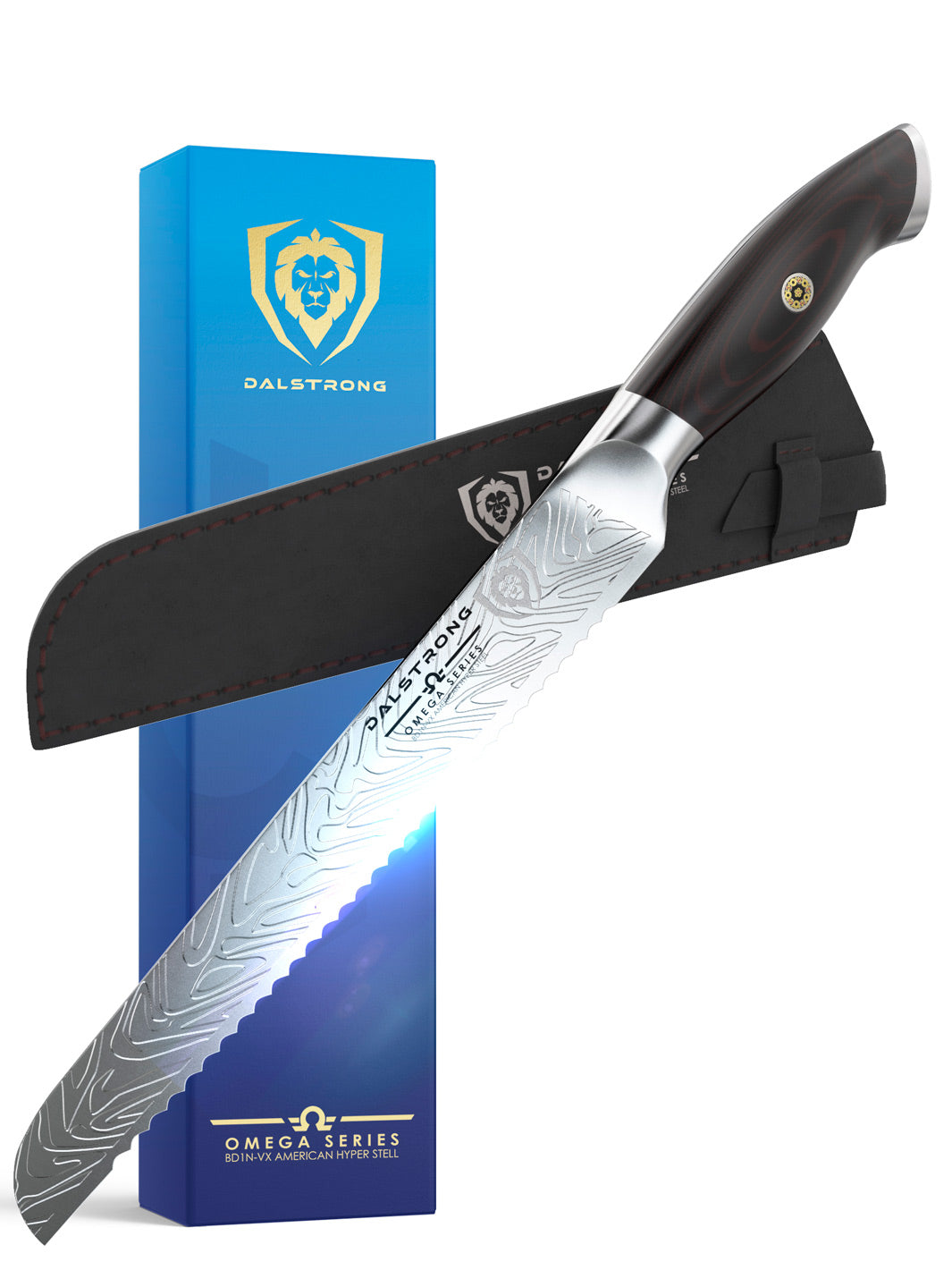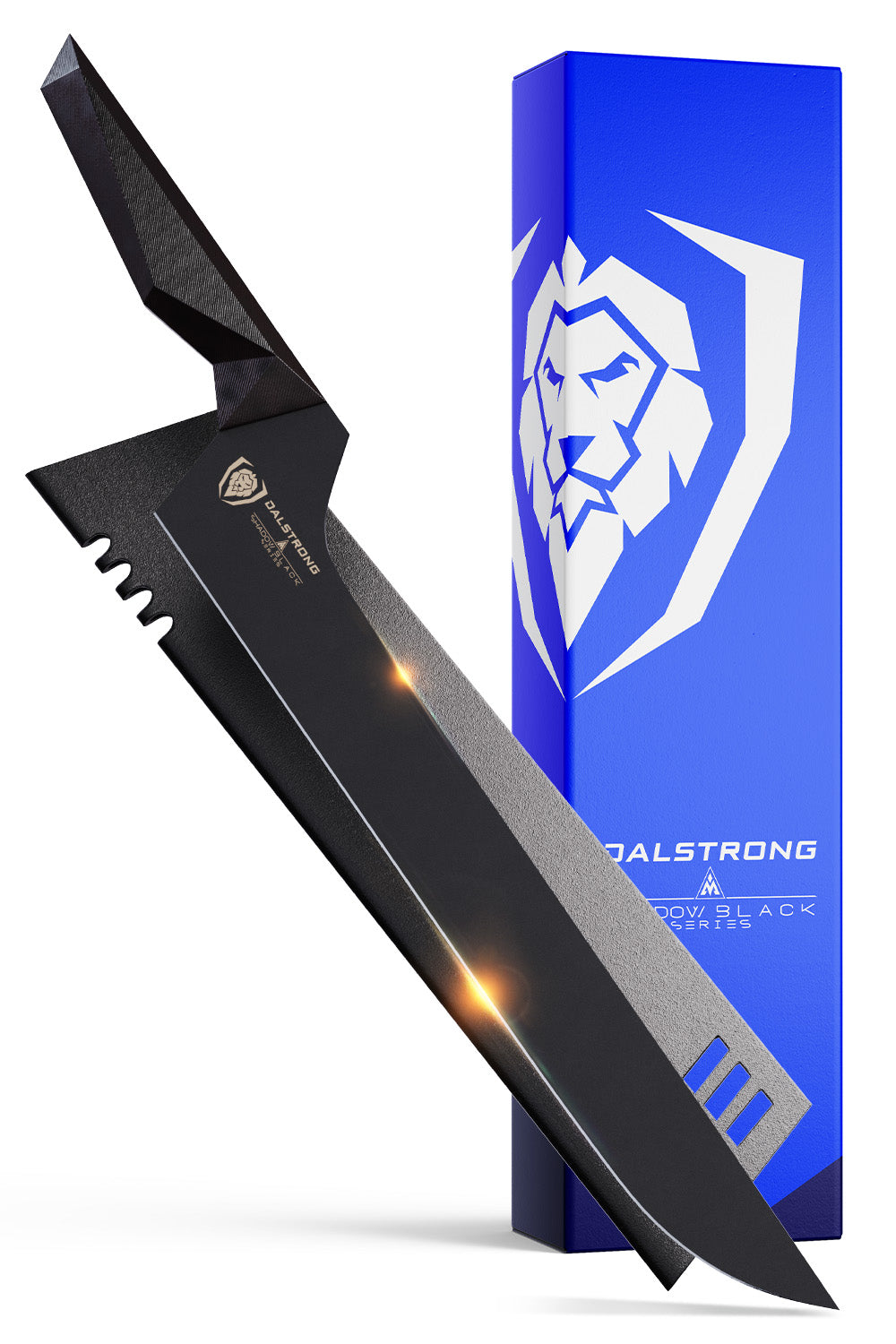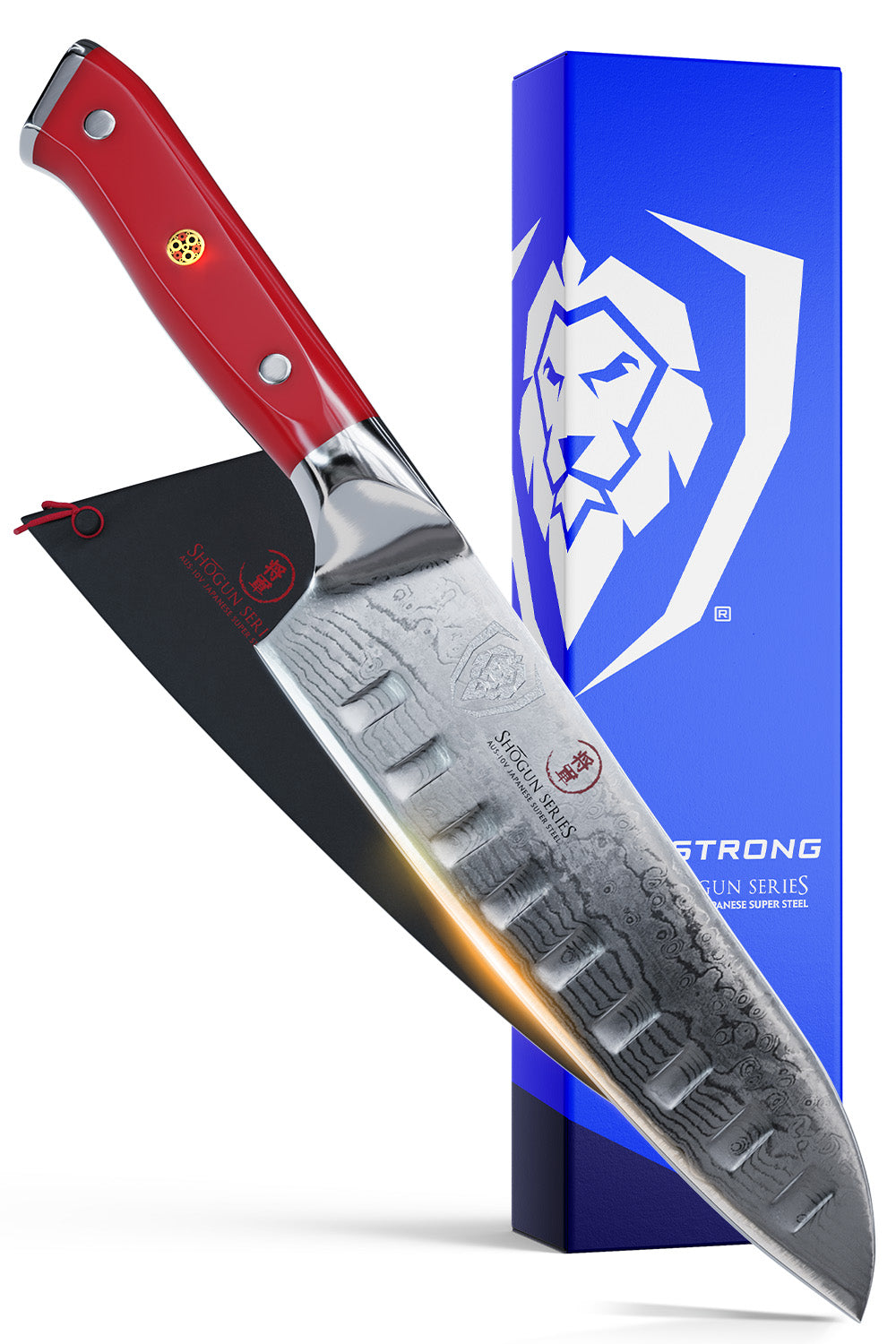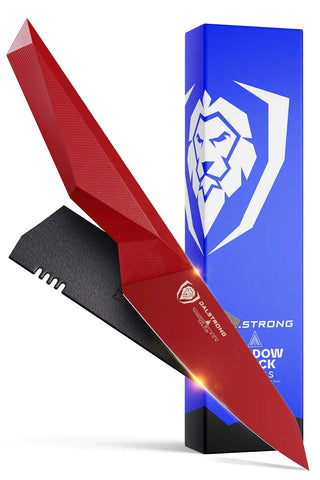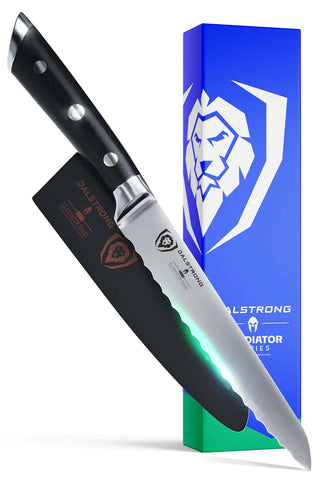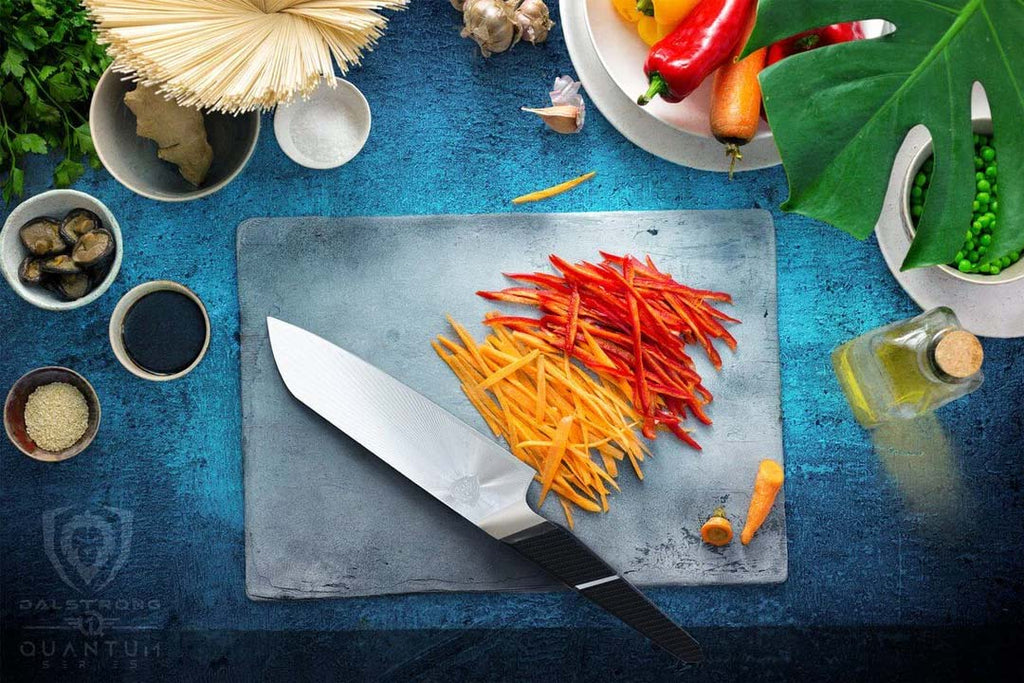 Santoku Knife 7" | Quantum 1 Series | Dalstrong
Santoku Knife 7" | Quantum 1 Series | Dalstrong
Quick Overview: How To Julienne Carrots
- Gather your essentials. A sharp chef's knife, a stable cutting board, and a julienne peeler for added convenience.
- Clean the carrots thoroughly, then use a vegetable peeler or knife to peel the outer layer for a clean appearance.
- Cut a thin slice off one side of the carrot to create a stable, flat surface, preventing it from rolling during the cutting process.
- With the flat side down, carefully cut the carrot into thin slices.
- Stack a few slices and cut them into matchstick-like strips.
- Adjust the length of the julienned carrots to suit your preference or the dish requirements.
- Add the julienned carrots to stir-fries, salads, or any other dish.
Have you ever wondered why chefs use a special technique called "julienning" when preparing carrots? Well, let's embark on a flavorful journey and discover the magic behind turning ordinary carrots into thin, matchstick-like pieces.
1. Why Do You Julienne Carrots?

Firstly, let's understand what "julienne" means. It's not just a fancy kitchen word; it's a way of cutting vegetables into long, thin strips, resembling tiny matchsticks. So, why do we go through all this trouble instead of simply chopping carrots into chunks?
Texture
One important reason is the texture. When we julienne carrots, we create thin, uniform pieces that cook quickly and evenly. This is especially handy when making dishes like stir-fries or salads. The uniform size ensures that each carrot piece gets just the right amount of heat, making them crisp and delicious.
Shape
Now, let's talk about the shape. Julienne carrots add a touch of elegance to dishes. Imagine a vibrant carrot salad with these slender, uniform strips – it not only looks appealing but also makes each bite a delightful experience. Plus, when carrots are julienned, they can be easily incorporated into other dishes like zucchini noodles or stir-fried veggies, creating a symphony of colors and flavors on your plate.
2. Knife Skills For Julienning Carrots
 Nakiri Vegetable Knife 6" | Phantom Series | Dalstrong
Nakiri Vegetable Knife 6" | Phantom Series | Dalstrong
Knife skills play a big role in julienning. Using a sharp chef's knife or a julienne peeler, chefs carefully cut the carrots into thin matchsticks. This not only requires precision but also teaches valuable kitchen skills. As you learn how to julienne, you're also mastering the art of using a knife effectively and safely. It's like a mini cooking school right in your kitchen!
Safety
Speaking of safety, let's touch on the importance of having the right tools. Using a sharp knife and a stable cutting board ensures that you can julienne your carrots without risking any accidents. Remember, kitchen tools are like your cooking superheroes – they make your job easier and safer.
Versatility
Now, let's dive into the versatility of julienned carrots. These little matchsticks can be used in a variety of dishes. Whether you're making a quick stir fry, a refreshing salad, or adding a colorful touch to your favorite soup, julienned carrots are like culinary chameleons – adapting to any flavor profile and enhancing the overall dish.
Precision
For home cooks, mastering the art of julienning opens up a world of possibilities. Imagine impressing your family and friends with a professionally presented carrot salad or adding a burst of color and nutrients to your everyday meals. It's not just about cutting carrots; it's about transforming them into something extraordinary.
Technique
Julienning carrots is not just a cooking technique; it's a culinary adventure. From enhancing textures and flavors to teaching essential knife skills, the art of julienning turns a simple carrot into a versatile ingredient that elevates your dishes.
Read about on how to store carrots so they stay crunchy, here.
3. How To Julienne Carrots Step-By-Step
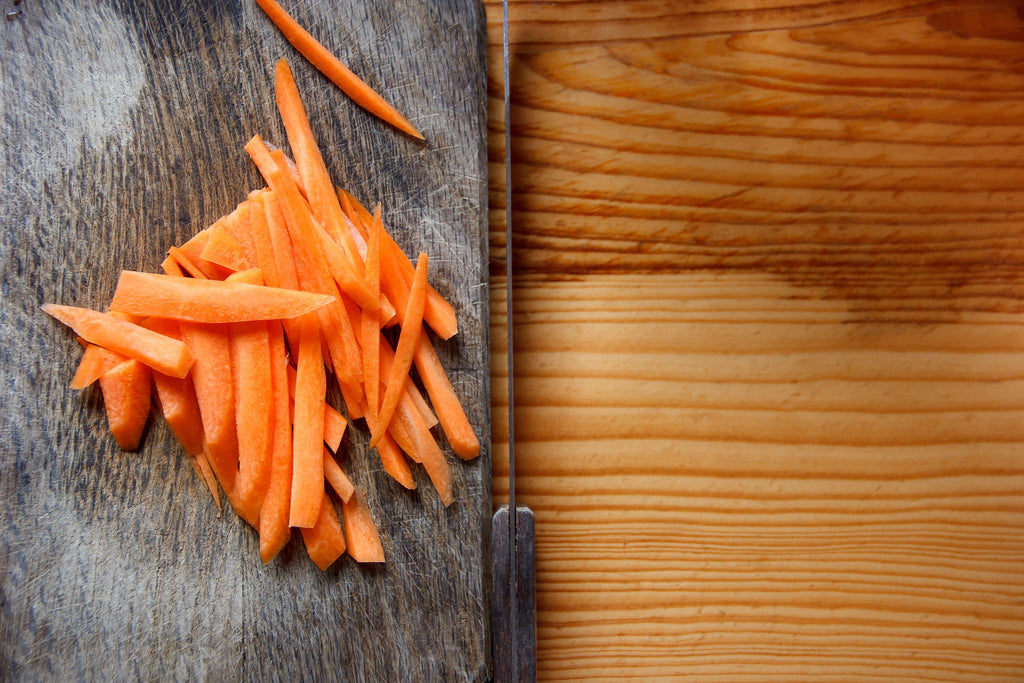
Grab a carrot, a sharp knife, and let's dive into the world of creating beautiful, matchstick-like carrot strips!
- Before we begin, it's essential to gather the right tools for the job. A sharp chef's knife, a stable cutting board, and perhaps a julienne peeler are your kitchen superheroes for this adventure. Having the right tools not only makes the process smoother but also ensures your safety.
- Start by giving your carrots a good wash. Remember, clean vegetables are the key to a healthy and delicious dish. Once your carrots are squeaky clean, pat them dry with a kitchen towel.
- Using a vegetable peeler or a knife, peel the outer layer of the carrots. This step is essential for removing any dirt and giving your julienned carrots a clean, polished look.
- To make julienning easier, you need a stable base. Cut a small, thin slice off one side of the carrot to create a flat surface. This ensures that your carrot won't roll around on the cutting board, making the process safer and more manageable.
- Now comes the fun part – slicing the carrot into thin matchsticks. Hold the carrot steady with one hand and, using a sharp knife, carefully cut the carrot into slices. Aim for pieces that are about the thickness of matchsticks.
- With your carrot slices ready, it's time to transform them into matchstick-like strips. Stack a few slices together and, with a steady hand, cut them into thin strips. This is where your knife skills come into play – take your time and enjoy the process.
- Depending on the dish you're preparing, you might want to adjust the length of your julienned carrots. Some recipes call for shorter matchsticks, while others prefer longer strips. It all depends on the size and shape you desire.
- Once you've completed the cutting process, take a moment to admire your julienned carrots. You've just turned simple carrots into elegant, uniform matchsticks ready to add flair to your dishes.
- Now that you've mastered the art of julienning, it's time to put your skills to the test. Incorporate your julienned carrots into stir-fries, salads, or any dish that calls for a burst of color and flavor. Experiment with different recipes and let your creativity shine.
4. Dalstrong Tools You Will Need
1. Paring Knife 3.75" | Shadow Black Series | RED Edition
Unleash the power of precision with the Dalstrong Shadow Black Series 3.75" Paring Knife. Designed for optimal maneuverability, this knife boasts a menacing black titanium-coated high-carbon steel blade, ensuring a razor-sharp edge for clean, precise cuts. The sleek, aggressive design and ergonomic G10 handle make it a standout in any kitchen.
PROS:
- Exceptional grip for effortless handling.
- Striking, aerodynamic handle inspired by the F-117 Nighthawk Stealth Fighter.
- Precision-forged, ultra-sharp blade with a hand-polished satin finish for a touch of sophistication.
CONS:
- The bold appearance may not suit those looking for a more traditional kitchen knife aesthetic.
2. Paring Knife 3.75" | Firestorm Alpha Series
Elevate your culinary experience with the Firestorm Alpha Series 3.75" Paring Knife. Often known as an "office knife," this straight-edged gem is compact yet versatile, perfect for peeling, coring, and slicing fruits and vegetables. Drawing inspiration from Earth's natural spectacles, the knife features a precision-forged 10CR15MOV High-Carbon Steel blade in 67 layers, boasting beauty and strength.
PROS:
- Stunning 67-layered High-Carbon Steel blade for unparalleled beauty and strength.
- Ergonomic "Wa" shaped handle for a comfortable and iconic grip.
- Double bevel blade hand-sharpened to 8-12° for ultra-thin slicing.
- Unique design with a red G10 ring and mosaic rivet adds durability and a pop of color.
CONS:
- The compact size may not be suitable for tasks requiring a larger blade.
3. Paring Knife 4" | Spartan Ghost Series

Discover the epitome of knife craftsmanship with the Dalstrong Spartan Ghost Series 4" Paring Knife. Engineered with ultra-premium powdered S35VN steel, this blade delivers unparalleled cutting power. The black DLC LionArmor coating ensures extreme durability, transforming the blade's surface into one of extreme hardness at 100+HRC.
PROS:
- Ultra-thin 1.5mm blade hand-sharpened to 8-10 degrees per side for a laser-like edge.
- Premium blood-red resin and ghost-ash black stabilized wood handle for a striking and unique appearance.
- Full tang construction and lightweight design for precision slicing and dicing.
CONS:
- The ultra-thin blade may not be suitable for heavy-duty tasks that require a thicker blade.
4. Santoku Knife 7" | Vanquish Series | NSF Certified
Experience the triple-threat versatility of the Dalstrong Vanquish Series 7" Santoku Knife, where "Santoku" means "three virtues" in Japanese. Crafted from high-carbon German steel with a 55+ Rockwell hardness, this knife effortlessly slices, dices, and minces. The sleek midnight black POM handle, impervious to water and heat, offers comfort and durability.
PROS:
- High-carbon German steel blade with a 55+ Rockwell hardness for exceptional power and resilience.
- Sleek midnight black POM handle, highly impervious to water, heat, and acidic foods.
- Taper ground and stone-polished blade for precision slicing and easy maintenance.
- Custom-fit sheath for safe storage and convenience.
CONS:
- The 7" blade size might be larger than preferred for users seeking a more compact Santoku knife.
5. Serrated Utility Knife 5.5" | Gladiator Series
Meet the Dalstrong Serrated Utility Knife – a culinary workhorse designed for the rigorous demands of the commercial kitchen. Crafted from high-carbon German steel with a 56+ Rockwell hardness, this knife effortlessly slices through a variety of foods.
PROS:
- High-carbon German steel blade with a 56+ Rockwell hardness for exceptional durability.
- Laminated G10 Garolite handle provides superior strength and refinement.
- Full tang construction and triple-riveted handle for added durability and balance.
- Mirror-polished bolster and NSF certification ensure a sanitary and quality build.
CONS:
- The premium quality may come with a higher price point compared to basic utility knives.
5. Frequently Asked Questions
What are the steps to julienne?
To julienne carrots, first, cut them into thin slices. Then, stack the slices and cut them into matchstick-like strips, creating uniform pieces perfect for various dishes.
How do you julienne vegetables quickly?
Speed up the process by using a sharp knife and a stable cutting board. Practice your slicing technique to become faster and more efficient.
Is there a tool to julienne carrots?
Yes, you can use a julienne peeler, a handy tool designed for quickly creating thin matchstick strips from carrots, making the process easier.
How to julienne carrots for sushi?
For sushi, julienne carrots by cutting them into thin, even strips, ensuring they're the perfect size for rolling into your sushi rolls. Use a sharp knife for precision.




